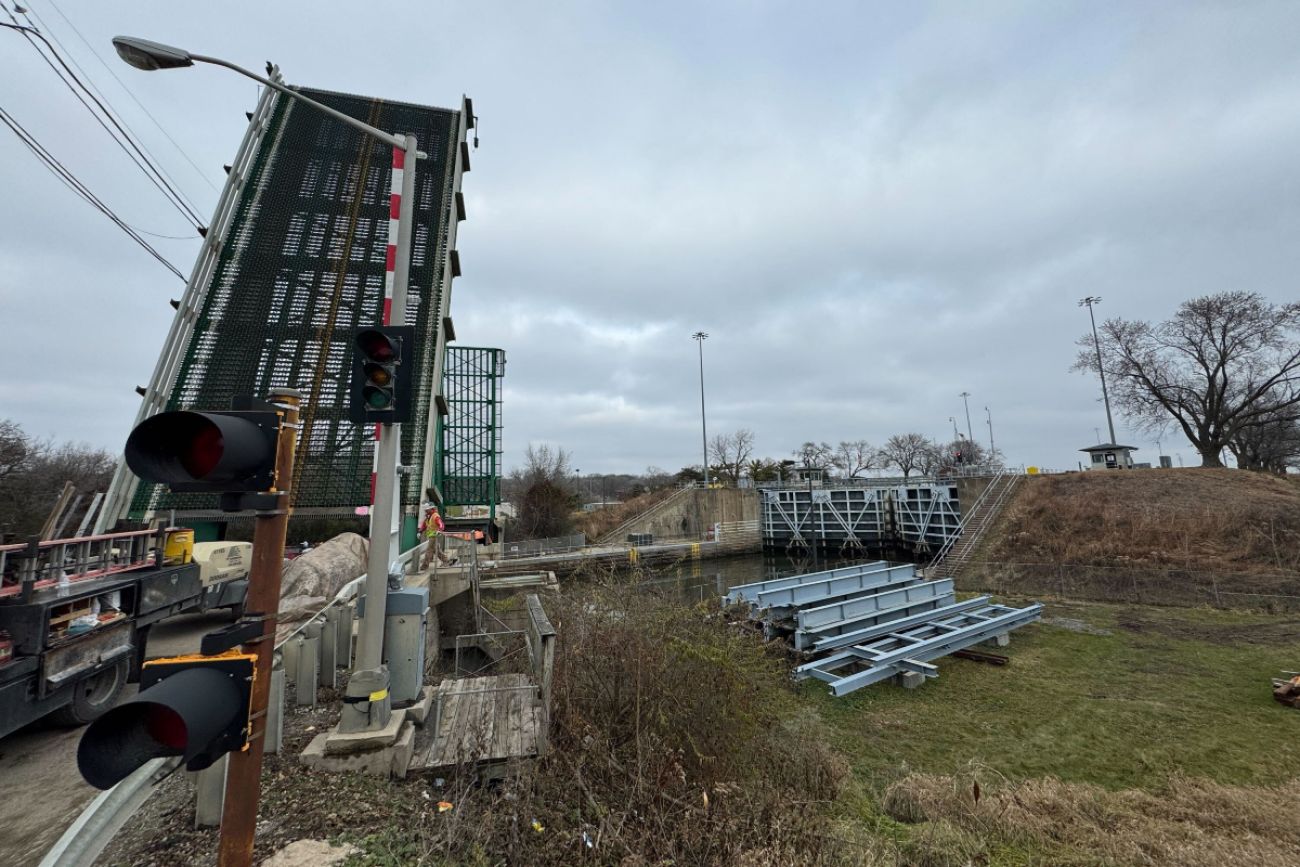Great Lakes invasive carp barrier slowed by stalemate

- Funding fight emerges over invasive carp barrier for Great Lakes
- Illinois governor wants a better deal for his state, Michigan
- States, Army Corps of Engineers must sign agreement to proceed
To prevent the movement of invasive carp into the Great Lakes, the states of Illinois and Michigan and the Army Corps of Engineers need to sign an agreement — but for months they have been locked in a stalemate over what comes next.
Documents obtained by WBEZ show that Illinois wants a better deal that leaves the door open for more federal funding and an incremental construction process.
“While the federal government has determined this project is of the highest priority, the taxpayers of Illinois and Michigan should not be the only states to carry the burden of the non-federal share of funding when the entire Great Lakes region will certainly experience the devastating impact of inaction,” according to a letter signed by Gov. JB Pritzker to the U.S. Army.
This coverage is made possible through a partnership between WBEZ and Grist, a nonprofit, independent media organization dedicated to telling stories of climate solutions and a just future.
The Brandon Road Interbasin Project (BRIP) is the billion-dollar answer to a decades-long concern among environmentalists, elected officials and business leaders that the invasive carp could use the Illinois River as a byway to escape the Mississippi River Basin and enter the Great Lakes, where it could upend the sensitive freshwater ecosystem and lake economy.
If the Great Lakes region were its own country, it would have the third largest GDP in the world — behind the U.S. and China, according to the Council of the Great Lakes Region. There are already more than 180 non-native species present in the five bodies of water. But according to experts, carp threatens to destabilize recreational and marine industries that turned the region into the economic powerhouse it is today.
The BRIP is the Army Corps’ state-of-the-art barricade going into the Des Plaines River near Joliet about 50 miles downstream of Chicago. The cost is expected to be upwards of $1.14 billion. Illinois taxpayers could be on the hook for operation costs for years to come.
To protect the lakes, the federal government will pay for 90% of the costs of the project and Illinois and Michigan will pick up the tab on the 10%. To date, Illinois has already committed $50 million in state funding to the project. But the governor’s letter shows that Pritzker is wary of overcommitting Illinois taxpayers.
Related:
- Five years into Line 5 fight, Nessel fears having to ‘start all over again’
- Solar eclipse 2024: What time and other answers from a Michigan astronomer
- Critics push to block Michigan's first 'chemical recycling' facility
“It would be irresponsible to write a blank check to the Corps of Engineers or any other project manager without having a better understanding of what we’re agreeing to for the long term,” according to a statement from a Pritzker’s spokesperson.
Michael Connor, Assistant Secretary of the Army for Civil Works, said in a statement to WBEZ that, “we appreciate Governor Pritzker’s letter, and I will respond directly to the Governor soon, as we look for the best approach to make use of the resources we have on hand to move the Brandon Road Interbasin Project forward.” Separately, an Army Corps spokesperson sent a statement that said it “does not have a precedent of executing incremental [agreements.]”
The agreement the governor’s letter proposes would immediately release $226 million in federal funds to begin initial construction and designing on the project — the funds have been on standby since 2022. Congressional lawmakers have not yet appropriated the remaining balance. Pritzker’s approach, according to a statement from the governor’s office, would expedite the project by allowing it to proceed in stages and place invasive carp deterrents as soon as possible while the state and the corps discuss remaining concerns.
But running the BRIP will remain on Illinois’ balance sheet for years to come. The state will be responsible for the cost of operation and maintenance in perpetuity — the total costs of which are currently unknown. Illinois already spends approximately $15 million annually to operate its existing electric barrier.
Another last sticking point is property near the BRIP site that the Army Corps is counting on Illinois to purchase. But findings in an ongoing lawsuit in front of the Illinois Pollution Control Board point to coal ash contamination at the site. The scope of the required remediation remains unknown, according to a spokesperson for the governor’s office, as do the costs to Illinois taxpayers.
This story was originally published on March 21, 2024.
Michigan Environment Watch
Michigan Environment Watch examines how public policy, industry, and other factors interact with the state’s trove of natural resources.
- See full coverage
- Subscribe
- Share tips and questions with Bridge environment reporter Kelly House
Michigan Environment Watch is made possible by generous financial support from:
Our generous Environment Watch underwriters encourage Bridge Michigan readers to also support civic journalism by becoming Bridge members. Please consider joining today.
See what new members are saying about why they donated to Bridge Michigan:
- “In order for this information to be accurate and unbiased it must be underwritten by its readers, not by special interests.” - Larry S.
- “Not many other media sources report on the topics Bridge does.” - Susan B.
- “Your journalism is outstanding and rare these days.” - Mark S.
If you want to ensure the future of nonpartisan, nonprofit Michigan journalism, please become a member today. You, too, will be asked why you donated and maybe we'll feature your quote next time!






